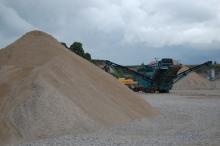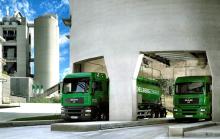
The 3.9 billion ton global cement market is being tipped to return to slight growth until 2023 after posting marginal declines from 2013 to 2018, according to a new study by the
A forecasted 1% compound annual growth rate (CAGR) in world cement sales during the 2018-2023 period will, Fredonia’s Global Cement report claims, be achieved despite reduced demand for the key building material in China, which accounted for over half of total global cement sales in 2018.
Global Cement predicts that China will continue to be a drag on global growth prospects for cement, as the nation’s robust economic expansion and related advances in a construction slow down. Excluding China, however, Global Cement states that the pace of gains worldwide will be much faster.
According to the new Freedonia study, cement market growth will be supported by expanding construction activity, as urbanisation rates and infrastructure investment in developing regions rise; increasing modernisation and technological advancement of cement industries in low-income and developing economies; growing interest in cement products with improved energy efficiency and environmental profiles, particularly in higher-income countries; and environmental and regulatory concerns steering product innovation.
As one of the world’s most energy-intensive manufacturing industries, concrete production is frequently implicated in environmental regulation – particularly in higher-income areas such as the US and the EU. As such, the Global Cement report explains how manufacturers in these areas often focus on increasing the efficiency and quality of their operations; improving product performance; and making cement more environmentally friendly.
The new study notes how a number of environmentally conscious cement innovations have been introduced in recent years, such as TecEco’s (Australia) carbon-trapping Eco-Cement and Holcim Philippines’ (LafargeHolcim) Solido with reduced clinker content, which provides for a better environmental profile than standard cement.
More information about Freedonia’s Global Cement report can be found at: %$Linker:







